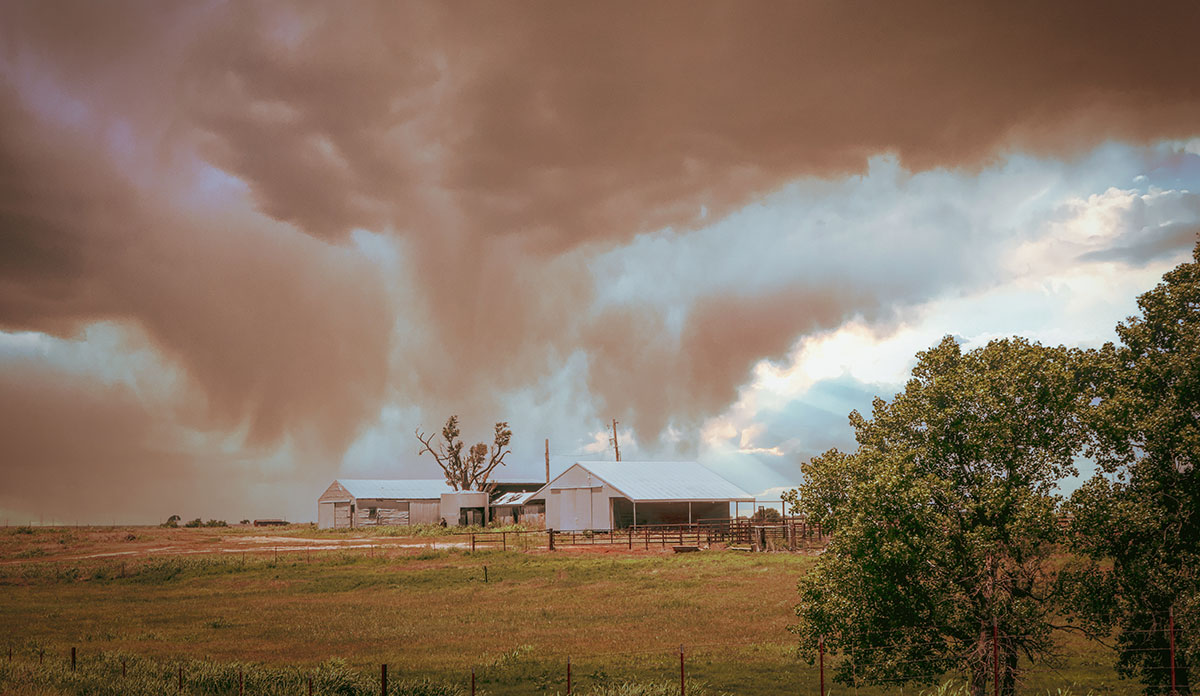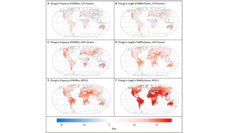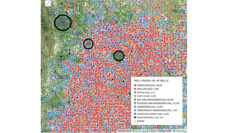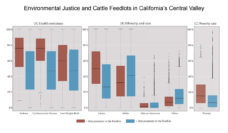John Steinbeck cemented the Dust Bowl in the American mind with his 1939 novel, The Grapes of Wrath. The story weaves together the compound impacts of oppressive social structures and environmental hazards on a sharecropping family in Oklahoma. The long journey of the Joads to California was the story of millions of Americans. The dust storms that ravaged the states of the Great Plains in the 1930s and 40s contributed to, in partnership with the Great Depression, an era of displacement and economic collapse.
The storms were largely caused by land mismanagement that turned grassland into farmland. Many families migrated to the Great Plains in the early 1900s due to federal farmstead policies incentivizing cultivation. High crop prices and heavy rainfall during the 1920s encouraged new arrivals to plant cash crops that eat away at topsoil. A period of drought in the 1930s intensified the drying of top soil and increased the presence of dust. Strong wind storms lifted dust into “black blizzards.”
The Dust Bowl had lasting impacts on American society. The migration from the middle of the continent started the long decline of rural populations. The 1930s also saw a period of government investment in relief funds, including the largest aid contributions approved by the federal government and the creation of land conservation and water management policies.
A study by Robert Alexander and team looked retroactively at the health effects of the Dust Bowl. It is estimated that 3.5 million people migrated due to the Dust Bowl. Nine million acres of farmland were left abandoned, often with dust piled 2 to 4 feet high. The dust storms contributed to increased death from measles, meningitis, respiratory and cardiovascular conditions.
Alexander’s work highlights dust storm effects that continue today. Most of the health impacts from dust are due to suspended particle concentrations like PM10, PM2.5, and the transport of biological and synthetic materials including bacteria, spores, fungi, viruses, pesticides, and heavy metals. Dust is capable of traveling vast distances, multiplying the area in which health impacts can be felt and studied. Dust from the Sahara Desert is commonly found in the eastern United States and in many other parts of the globe.
How dust will impact human health in the future will be determined by land use practices, climate variability, and climate change. Strains on water supply that result in the draining of inland lake basins, for example, contribute to dust storm frequency and severity. Dust from the Mono and Owen Lake basins in California due to water use and drought have contributed to some of the highest loads of atmospheric PM10. Dust levels in Colorado rose 500% as a result of westward expansion in the 19th century. The atmospheric dust load doubled over the 20th century. Proper conservation measures such as controlled grazing can decrease the frequency of dust storms. Measures like this have been successful in the Upper Plains states and Utah.
The Dust Bowl serves as an important reminder of the severe consequences dust can have on health and livelihoods. Although dust storms may be motif in American Literature, they also continue to be wake-up calls for prioritizing sustainable and forward-thinking land use practices.
Photo via Getty Images














